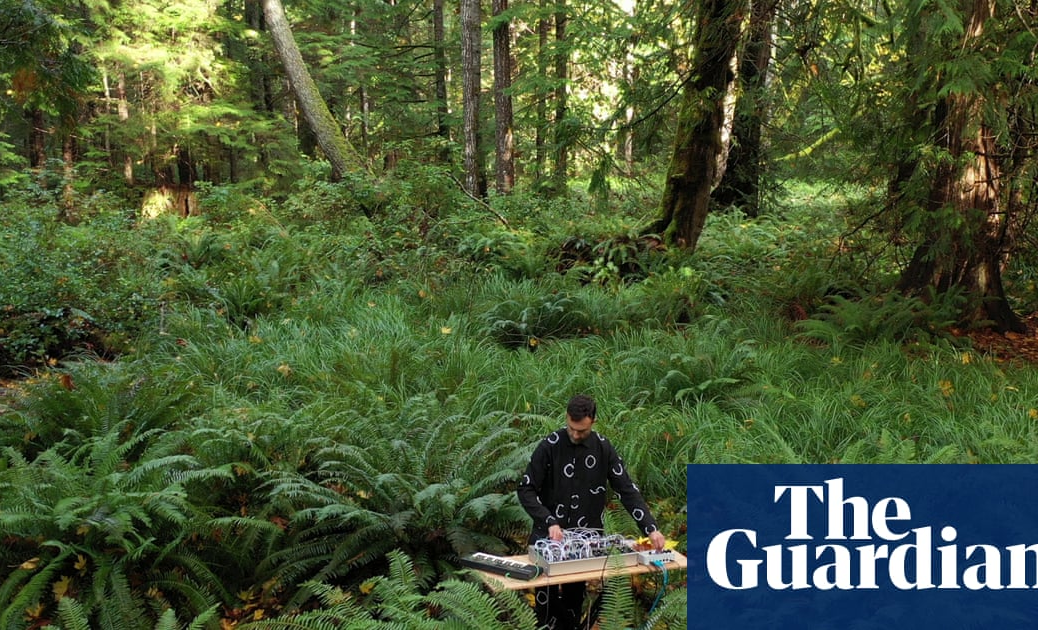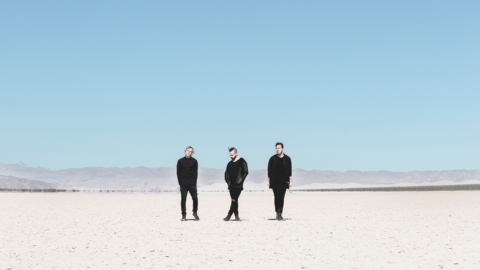Musicians and scientists armed with synths and electrodes are plugging in to mushrooms and cacti to encourage humans to reconnect with the Earth
To musician Tarun Nayar, mushrooms sound squiggly and wonky. Nayar’s “organismic music” project Modern Biology has only been active since last summer but, with his videos of mushrooms making calming ambient soundscapes, he’s already racked up more than half a million TikTok followers and 25m views.
The electronic artist and former biologist hangs out in mushroom circles, spending summers in the northern Gulf Islands of British Columbia with the Sheldrake brothers: Merlin, the author of the bestselling Entangled Life: How Fungi Make Our Worlds, Change Our Minds and Shape Our Futures, and producer-songwriter Cosmo. So it seems only natural that he would begin foraging mushrooms – not to eat, but to listen to.
Nayar makes, in simple terms, “plant music”: it is created by connecting electrodes and modular synthesisers to plants and measuring their bioelectrical energy, which then triggers note changes in the synthesiser. He describes the process as “an environmental feedback mechanism. It’s based on galvanic resistance – the same principle by which simple lie detectors work.” We’re effectively hearing the changes in resistance represented as bleeps and bloops, like retro-futuristic music harking back to the very early days of experiments with synthesisers.
The first time he experimented with plants was on one of those summers away with the Sheldrakes. Nayar saw a thimbleberry plant growing outside his cabin, connected the leaves to a software synthesiser playing the piano, and listened. Nayar and others like him believe that these experiments with plant sonification are vital in forging deeper connections with the natural world. “When people are doom-scrolling on TikTok and all of a sudden a little mushroom pops up, that’s a moment of reconnecting, even if it’s through a phone. If music and tuning in more deeply can bring us here right now, then there’s hope.”
For North Carolina-based electronic musician Noah Kalos, AKA MycoLyco, “just being able to find a signal that we can really observe helps to raise awareness that fungi are all living, we’re all part of the same thing.” Like Nayar, Kalos has gone viral with videos of his experiments connecting synthesisers to shrooms to create trippy beats. “In my work I’m picking up signals and using them artistically. To experience that level of interaction definitely helps you feel more connected.”
Another person also experimenting with plant sounds is Joe Patitucci, the CEO of Data Garden, a “data sonification” company whose PlantWave app translates plant biodata into music. Aided by the app, he has just released a record from cannabis plants, aptly named 420hz: Plant Music from Cannabis Plants. “The value of listening to plants is really about being super-present in the moment with nature,” Patitucci says. “It’s a reminder that we’re all part of this same system. I would hope that when people make that connection, they understand that destroying Earth is destroying ourselves.”
It was this sense of environmental urgency that motivated sonic artist and “biophilic systems designer” Mileece to explore creating soundscapes from plants more than 20 years ago. She is one of the pioneers in this field, though she points to the 70s book The Secret Life of Plants that inspired a documentary film, and John Lifton’s Green Music, based on the bio-electric sensing of plants’ response to their physical environment, as influences in her work.
Mileece has spent tens of thousands of hours developing software and hardware to translate bio-emissions (ie electricity and data) from plants into what she calls “aesthetic sonification”. She builds immersive, responsive environments that translate the interaction between plants and humans into music. One 2019 installation at Tate Modern, London was a pod full of plants and flowers that reacted to people entering and moving around the room. Underpinning her creations is a mission to educate communities on climate change and the threats to biodiversity – the work stemming from her early days experimenting with plants and electronics in her bedroom.
Mileece began working at a time when there was less acceptance around environmental justice or the climate crisis; getting funding for her projects was a long and difficult process. “I was called all sorts of bad words for being an environmentalist. And there is no difference between what Greta Thunberg says and what I said, but everyone kind of hated me for it.”
As a teenager, Mileece learned to code and trained as a sound engineer. In her mid-20s she became the resident artist at the London School of Economics, where she developed a way to transcribe the electrical signals from plants into the basic elements of sound design. She shows me a photograph of an early experiment. On her desk sits a potted plant with hair clips attached (she’d made her own electrodes), connected to a custom-made module and synth she’d coded herself, and linked up to what is now a vintage Mac computer.
It has been a long journey for her, and only now is she witnessing the sudden virality of people plugging synthesisers into mushrooms. “The fact that scientists and people in general are finally taking this all seriously has been the point of my work all along, and precisely why I worked so hard not to let it be a gimmick,” she says.
A cute video of a cactus appearing to sing might feel like a gimmick, but Mileece, Nayar and others work with plants because they say there is no experience like it: finding that understanding of how a natural element is interacting with their home-built technology. The music has a story to tell, too. MycoLyco has soundtracked a Stella McCartney show; the designer has used mycelium – grown from mushrooms – as a leather substitute.
For Mileece, it has always been about forging connections between people and the planet. “It’s to help people remember how much better off we are when we are integrated with the Earth, so we don’t ruin it for ourselves or all the other animals, insects and birds.”
At the very least, these botanical soundscapes might bring some people closer to understanding the natural world – even if they come across a video for just a few seconds. These artists have made plants sing, and they’re asking us to listen.
This article was amended on 16 May 2022 to give the full name of Joe Patitucci’s record.














